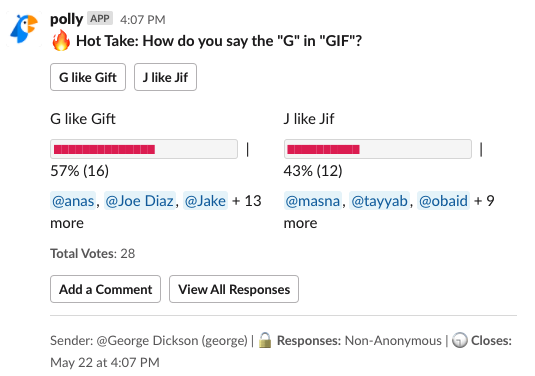Do you look forward to staff meetings?
If you do, you’re in luck because as Leslie A. Perlow, Constance Noonan Hadley, and Eunice Eun point out in “Stop the Meeting Madness”
“…meetings have increased in length and frequency over the past 50 years, to the point where executives spend an average of nearly 23 hours a week in them, up from less than 10 hours in the 1960s.”
And that figure continues to climb as meetings become easier to schedule and attend. With a continued trend toward more meetings, maybe we should start thinking about how we can make them more valuable and enjoyable.
1. First step, break the ice
Recent research found that on average, 37% of meetings started late. Your team may differ, but unless it’s an extreme outlier, there’s a good amount of time you and your colleagues spend a significant amount of time just waiting for people to show up.
Assuming you can’t dive straight into the heart of your discussion and leave latecomers out, how do you make better use of that time spent waiting?
Spend that time breaking the ice.
Even if attendees of a meeting are already close collaborators, a quick exercise of ice-breaking can really help to lighten the room and get everyone in a more collaborative mood. There are countless ways to break the ice before your staff meeting. We’ll outline a few of our favorites, but first let’s touch on what not to do.
How not to break the ice
Try not to fall into the trap of breaking the ice with repetitive threads, or standard-issue small talk. It’s human nature to want to fill the awkward gaps of silence, sometimes to the extent that practically anything is an improvement. If you want meetings to be enjoyable though, you need to dig a bit deeper and find something relatable and interesting.
Talking about the weather is such an over-trodden path that it became the most common cliché among conversation icebreakers. Unless there was a major weather event overnight (or there’s one happening in the moment), the weather is probably not the most engaging topic. It may be relatable, but it’s not remotely interesting.
In a distributed team, it’s often neither. You might have people spread across your state, country, or the world—each with their own weather experience that will almost certainly differ.
Skip the sports recap unless you know for sure everyone in the room is a fan. Otherwise, attendees who don’t follow sports (or the particular sport you’re discussing) they will be bored at best, and at worst, they’ll feel left out.
If either of the above are your tried-and-true methods of breaking the ice, that’s okay, but trust me when I say you can improve.
So, what do you break the ice with if sports and weather are off the table? Consider a few of the options below. Most of these icebreakers can be done without any special tools, there are some great products available to make it easier and more engaging to participate.
Hot takes
Hot takes are a way to spark some spirited, but good-natured debate, and a perfect icebreaker. The key to a good hot take is finding a topic that people hold strong opinions on, but one that isn’t likely to genuinely upset anyone.
That might sound really difficult to come up with, but once you get the hang of it, hot takes start to come naturally. Start with a topic most, if not all attendees can relate to, then find a divisive take on it.
For example:
- How do you pronounce the G in GIF: G like “gift” or J like “Jif”?
- Dogs or cats: which is the better pet?
- Ketchup on a hot dog: is that OK?
- Sandwiches: slice diagonally or vertically?
- Cereal then milk, or milk then cereal?
You may find that members of your team hold an unusually strong opinion on a topic you didn’t expect.
Editor’s note: “jif” is the one true correct pronunciation, despite what over half the Polly team might tell you.

Celebrate your team
Find something to celebrate in every staff meeting. In good times and during rough patches, there’s always cause to celebrate. Small things or big things—it doesn’t really matter so long as you’re showing appreciation for the people in the room.
When things aren’t going your way, it may seem difficult to come up with something to celebrate, but that is when it’s especially important. You may not be able to manufacture good news, but you can absolutely build resiliency and a shared sense of camaraderie by celebrating the efforts of your colleagues.
Trivia
Trivia is a lightweight, low-effort way to inject some fun into a staff meeting. To get the best engagement, pick a topic you know most of the meeting attendees will have a good chance of answering. While remote meetings are still the most common format, it can work to post answers to trivia questions in the chat, or use the ‘raised hand’ function.
A few of our favorite trivia categories at Polly are:
- TV Shows and Movies from the 2000s
- World history
- Cat facts
- Music by decades
To make trivia extra engaging, you can use a tool (like Polly!) designed specifically for trivia with leaderboards, countdowns, and built-in questions.
2. Bring a collaborative agenda
Bringing an agenda to a staff meeting is a great step toward improvement; bringing an agenda that includes participant input will make you a legend.
If you want to have an engaged audience, one surefire way is to get them invested in the presentation. Taking feedback and suggestions on the agenda before the meeting is a great way to inspire that investment.
As an attendee, one of the most valuable things you can do is to review the meting agenda in advance, so you’re prepared. Sharing relevant notes with the organizer in advance can also make a major difference in meeting efficiency.
As a meeting organizer, you can help attendees take these steps by shifting the onus away from them, and reaching out proactively, in advance of the meeting. Doing this achieves two things at once:
- It’s a forcing function to make sure everyone on the invitation list has something to gain and give by attending. (If they don’t, reconsider their place on the list.)
- It lowers the friction of sharing that information, and sets the expectation that everyone attending the meeting is a vital resource.
3. Check in
Although checking in only takes a short time, it can save a significant amount of time and effort in a meeting. When done right, a check-in should only take a minute or two.
Before you dive in
Take 30 seconds to review the agenda before you kick off the meeting. Check in with attendees to make sure you’re not missing any important topics related to the subject at hand.
Similarly, check in to make sure there isn’t anything on the agenda that was already resolved since the invite went out. That audience insight can help guide the meeting toward a more efficient, effective use of time.
At the midway point
Take a quick moment to check the pulse among your colleagues. Have you covered everything in sufficient depth? Are there any follow-up questions or contingencies you can hash out while everyone’s still in the same room?
In education, this strategy is often referred to as Checking for Understanding (CFU)—and what is a staff meeting, if not a group education session? A quick CFU ensures everyone is on the same page, that you’re addressing the topics with clarity, and can also help reduce the number of follow-up meetings.
Before closing
Before bringing the staff meeting to a close, take just a second to make sure everyone is clear on the outcome of the meeting. If there are action items, run through them briefly. Make sure every one of those action items has a designee, and there are clear parameters around them.
Everyone should walk away with a clear understanding of what the meeting accomplished, and what the next steps are.
Post-meeting
Following up with a meeting feedback request is one of the fastest ways to start improving every new meeting you lead. There are two keys to making this exercise as valuable as possible:
- Reduce friction.
- Capture useable data.
Luckily, there’s a format that can help achieve both. Ask a quantitative question in the form of a statement, like “On a scale of 1-10, I felt this meeting was a good use of my time.”
Quantitative questions like that take almost no effort to answer, and the data they provide are simple to plot and track. But quantitative data only tell part of the story.
You may find that your last meeting achieved an aggregate score of “5.” That score is a clear indicator that the meeting wasn’t as valuable as it could have been, but it doesn’t help to explain which part of the meeting needed improvement. That’s where a simple qualitative follow-up to the first question can be immensely helpful.
The drawback with qualitative questions is that they require more effort (and usually time) to answer. For that reason, it can be most effective to ask a quantitative question, with an optional qualitative follow-up.
“On a scale of 1-10, I felt this meeting was a good use of my time.”
(Optional)
"What could have made this meeting better for you?"
Or
"What did you find most valuable about the meeting?"
4. Keep it short and sweet
Time is irreplaceable, and the time your colleagues share with you is a privilege. When you’re asking for it, make sure it’s worth their investment. Perlow, Noonan Hadley, and Eun explain:
”For one thing, time is zero-sum. Every minute spent in a wasteful meeting eats into time for solo work that’s equally essential for creativity and efficiency.”
This means that for your meeting to feel valuable to attendees, it needs to feel equally (or more) valuable than the time they would have spent getting their work done. Imagine what your schedule would look like if everyone applied this logic before calling a meeting.
It’s common for meetings to be slotted as 30 or 60-minute events; however, you may not need that full time slot. Challenge yourself.
Can you get this meeting done in 20 minutes instead of 30? Could your 60-minute meeting wrap in 40?
5. Shrink the audience
According to a National Bureau of Economic Research study on a global cohort of over 3 million users, “…compared to pre- pandemic levels, increases in the number of meetings per person (+12.9 percent) and the number of attendees per meeting (+13.5 percent)…”
At a certain threshold, audience size can impede the progress of a staff meeting. While there are specific meeting formats like all-hands, town hall, lunch-and-learn or AMA meetings that are meant to have a large audience, the average staff meeting often benefits from a small roster.
Take David Grady’s NO-MAS strategy and apply it proactively to your invitee list. Don’t fall victim to Mindless Invite Syndrome. If a potential attendee won’t bring a unique and crucial perspective to the meeting, protect their focus time like you’d protect your own. Invite them as optional, or skip the invitation entirely.
How about you?
Are there any strategies you and your team use to make the most of the time you spend in meetings? We’d love to hear about it, and may add it to this list! Let us know at @polly_ai!





/Internal%20Comms%20Fun%204.png)
/Ask%20questions%20fun%204.png)





